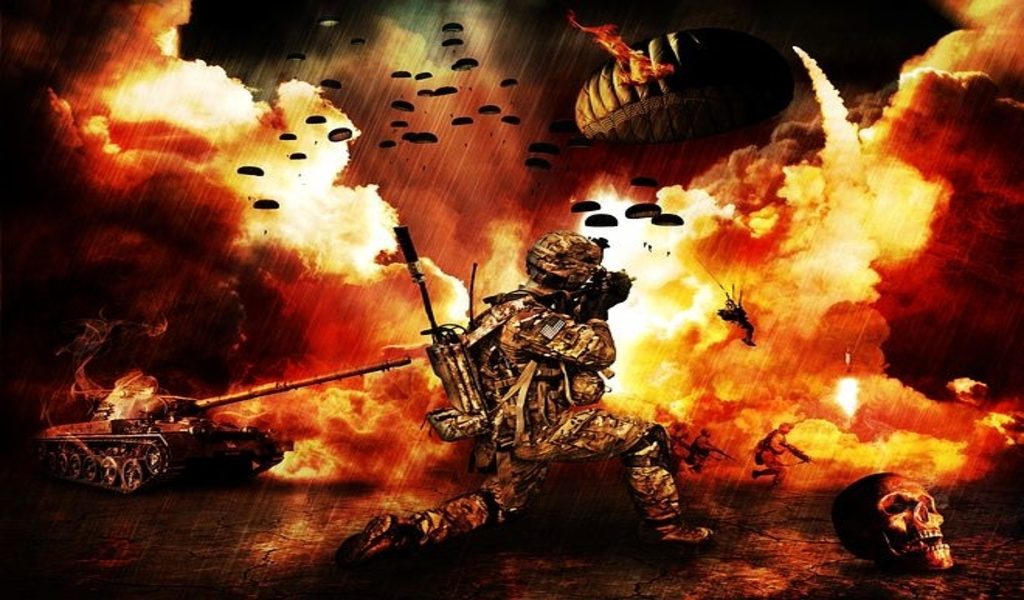
Extrajudicial killings, usually referred to as targeted killing by states, are a contentious topic of international law. Such executions are conducted by governments without due process and thus are frequently defended on the basis of counterterrorism or national security. Several experts, however, contend that these murders are against international law and violate fundamental human rights. In this article, we would explicitly focus on the idea of “democratic murders” as we explore the legality of targeted killings by nations within international law. Targeted killings are deliberate measures of lethal force used by nations during peacetime or even during military conflict to destroy certain people who are not in their control.
Although the term targeted killing is not specifically defined by international law, it became prominent in 2000 following Israel making its targeting of accused terrorists in the Palestinian territories official. Any specific use of lethal force, which is typically carried out by the intelligence or military of a country, can range widely—from cruise missiles to drone attacks to special operation attacks. U.S.-directed murders have mostly targeted the al-Qaeda and Taliban commanding networks in Afghanistan as well as the isolated tribal regions of Pakistan, mainly by drone operations. Yet, American operations have grown recently to encompass nations like Somalia and Yemen.
Legal Framework and Challenges of Targeted Killing
Very few situations allow for the utilization of excessive or lethal attacks by governments, according to international law. In accordance with Article 51 of the United Nations Charter, self-defense constitutes the most frequently asserted legitimate basis for targeted killings. This clause permits nations to use force in retaliation for an armed attack or to stop one that is about to happen. Nonetheless, even in self-defense situations, recourse to deadly force ought to be justified and appropriate given the danger posed to the nation.
In addition to the right to self-defense, states could also be authorized in using fatal force against one another during an armed war. States are allowed to use force towards enemy fighters in accordance with international humanitarian law, generally known as the rules of war. The rule of distinction as well as the ban on arbitrary killings are just two of the strong restrictions that apply to the application of excessive force even in military conflicts. States are required by the rule of distinction to differentiate between combatants and civilians or to focus any assaults solely on military targets.
In spite of the stated legal framework, targeted killings by nations had recently faced a number of legalities. According to critics, these execution-style killing usually violates international laws, particularly the prohibition against extrajudicial executions and the proportionality principle. This rule compels nations to assess the possible damages to civilians existing against the expected benefits of striking a specific target in the circumstances of targeted killings. The use of lethal force may be deemed illegal in situations where the loss to civilians is deemed to be disproportionate to the expected military advantage.
Targeted Killing or Democratic Murder?

The expression “democratic murder” describes circumstances in which a state or governing authority defends or advances democratic objectives, like national security or the rule of law, by killing individuals or groups. Or to put it another way, it is a sort of governmental terrorism committed in the name of democracy. Extrajudicial executions conducted by the Philippine authorities as a component of President Rodrigo Duterte’s “war on drugs” was an example of democratic murder in the real world. Duterte has supported police and vigilante groups since entering power in 2016, to kill suspected drug dealers and users without due process of law. The deaths have been defended by the administration as crucial for upholding law and order and safeguarding the nation from the risks posed by drugs. Humanitarian organizations have, meanwhile, blasted such executions as flagrant abuses of democratic values and violations of human rights.
The deployment of UAV attacks by the U.S. in the Middle East is another illustration of democratic murder. Although the U.S. administration has justified such attacks as crucial for hunting terrorist organizations and safeguarding national security, these operations have led to the deaths of several uninvolved civilians. These attacks have drawn criticism from human rights organizations for breaking international law and undercutting the concepts of due process and accountability. These values are undercut, and significant human rights violations may result when bloodshed and extrajudicial executions are carried out in the name of democracy.
Case Study – Targeted Killing
Some high-profile instances have recently focused on the use of targeted assassinations by authorities, We shall look at a few of those examples in this part and evaluate their legitimacy under international law:
The Israeli Context

To “Legalization” from “doing” and “denying” Israel implemented a covert practice of targeted killing within occupied areas throughout the initial intifada. During the period, the Israeli military maintained undisputed command over the regions, while Palestinians were being imprisoned administratively or arrested, tried, and imprisoned in large numbers (Israel had the highest per capita incarceration rate in the world at the time). It is undeniable that murdering suspects comprised extrajudicial killings. Israel’s targeted assassination practices were vehemently denied over the years in order to avoid accusations of war crimes. 6 weeks into the second intifada, on November 9, 2000, Israeli soldiers assassinated Hussein ‘Abayat and two female “bystanders,” which was the ending of a doing-and-denying cycle. The federal authorities took control for the first time.
Israel was the initial nation in the world to officially declare the legitimacy of “pre-emptive targeted killing,” following in the footsteps of its pioneering tradition of “legalizing” torture (in 1987). According to the language of war, the killings of unintended bystanders were referred to as “collateral damage.” One of the greatest prominent targeted killing attempts took place on July 22, 2002, when an F-16 detonated a one-ton bomb to murder Salah Shehadeh, the head of Hamas’s military wing. Within the heavily populated Gaza area of al-Daraj, the explosion destroyed Shehadeh’s apartment building, and 8 other adjoining properties, and partially wrecked nine more. In addition to Shehadeh and his bodyguards, 14 Palestinians were also murdered, among 8 minors, the youngest among them being just 2 months old, and over 150 others were hurt.
In this case, the military launched a probe in response to public outrage about the magnitude of the bomb, the targeting of a residential area, and the high mortality rate. Despite acknowledging the presence of “shortcomings in the details given,” such as the existence of “innocent citizens” close to what was supposed to be Shehadeh’s “functional base,” the finding validated targeting Shehadeh as a practitioner of terrorist violence. Palestinians were executed in targeted killing missions between the commencement of the second intifada and September 30, 2012, among them 259 were targets; this total does not include Palestinians murdered through other causes.
Drone monitoring, in particular in Gaza, and the lethal threat of aerial attacks it heralds, have been an ongoing reality for the local inhabitants. 43 Israel intensified its strikes and intrusions into Gaza in October and November 2012, to which Palestinian terrorists responded by firing rockets across the border. Ahmed al-Jabari, the Hamas leader who was negotiating the cease-fire and was supposed to serve as its enforcer, was killed by an Israeli drone attack on November 14 while the agreement was being finalized. The cease-fire agreement had been facilitated by Egypt. Operation Pillar of Defense began with deliberate killing. The attack came to an end on the eighth day following a truce involving an Israeli commitment to halt invasions and the targeted killing of particular people.
The United States, Drone Strikes, and Targeted Killing

In nations like Pakistan, Yemen, and Somalia, the U.S. has been at the vanguard of using military drones to conduct targeted killings. Owing to worries concerning human mortality and an absence of openness and responsibility in decision-making, the deployment of drones has generated controversy. Every president since 1977 has issued an executive order outlawing political assassination in the US. This restriction was lifted in September 2001 while President Bush covertly gave the CIA, a civilian agency, permission to detain or execute suspected terrorists anywhere in the globe. A CIA-operated drone launched from Djibouti shot a Hellfire missile into a car in Yemen. The target was Qa’id Salim Sinan al-Harithi, this was the first UAV strike outside of Afghanistan on November 3, 2002. Kamal Darwish, among the other 6 individuals killed in the hit, was a citizen of the United States.
Later, officials used Israeli-style logic to defend the execution, stating that targeted killing was a legal strategy sometimes against someone living in a nation that was not at war with the US because Harithi was a member of al-Qaeda and was allegedly responsible for the 2000 bombing of the USS Cole and his detention was impossible. But, the Yemen strike “encompasses a solid case of extrajudicial killing,” according to the UN Special Rapporteur on Extrajudicial, Summary, or Arbitrary Executions. In February 2002, the first UAV attack in Afghanistan targeted people who were either engaged in hot pursuit or not directly involved in combat.
At the time of the “war on terror” extension to Iraq in 2003, Israelis were deployed to provide kill-operation assistance to US forces. The CIA dominated intentional drone killing throughout the Bush administration. But, due to the need for useful insight into national security, capture has been the favored choice. The US military captured, imprisoned, and questioned hundreds of thousands of individuals, and also CIA held 100 or more “high-value detainees” (HVDs).
Targeted killing has substantially increased in regard to the number of airstrikes on a monthly basis and the enlarging geographical expansion. Since 2009, when Barack Obama became president. Targeted operations by the Joint Special Operations Command, which were initially implemented in Iraq in 2006, were moved to Afghanistan by means of drones in 2009. US arguments for the “legal validity” of targeted killing follow Israel’s approach, which supports the execution of individuals who represent an apparent and immediate danger that can’t be apprehended. Yet, there are considerable differences in the geographical extent, attack rates, and number of casualties. Based upon the Approval for Using Armed Force, the Obama Administration defends its transnational right to kill suspects. The government’s reaction to terrorism was not subject to any geographic (or time-based) restrictions under this AUMF law, which Congress approved shortly after the 9/11 attacks.
A group of Navy Seals invaded Osama bin Laden’s hideout in central Pakistan on May 1, 2011, as part of a joint CIA-JSOC operation. Osama bin Laden, the head of al-Qaeda and a terrorist who was accountable for the deaths of countless innocent individuals, was executed in a strike by the U. S., President Obama announced in a speech to the country a few hours later. Many laws of war advisors and the majority of Americans agreed that this operation was legal since bin Laden was a valid military target, though some regretted killing Bin Laden rather than capturing him, they thought the 9/11 victims were denied the sort of justice that a criminal prosecution might well give.
Although the mission appeared to support the theory that targeted killing was successful in removing terrorists, bin Laden’s special position did not put an end to arguments regarding the legitimacy of the practice generally.
The United States began a drone strike just 5 days after the above-stated incident in Yemen targeting al-Awlaki. That strike was not successful, but two others died. Al-Awlaki and the other US citizen, Samir Khan, were assassinated along with the other two individuals on September 30, 2011, in a combined CIA-JSOC drone attack. A 16-year-old al-Awlaki’s son ‘Abd al-Rahman, his 17-year-old cousin, along with five more individuals were murdered on October 14 by another airstrike while they were eating in an outdoor restaurant. Opponents also noted the fact that al-Awlaki was included in following the Fort Hood incident and the attempt to detonate a bomb in his underwear seemed to defy the idea of imminence, and that the 2010 legal order to kill him appeared to be a standing order for execution.
Targeted killing policy in the US is paradoxically a mix of secrecy, selective leaks, and public pronouncements by senior officers who have claimed credit for the agency’s effectiveness. The authorities claim that such programs were covert, along with the standards for being targeted and thus the judgment process that goes before airstrikes, in reaction to legal action.
Conclusion
The three primary criticisms of targeted killing—that it is ineffective, immoral, and illegal as a matter of law—remain the center of the present debate. The author agrees that part of this criticism may be justified, and the sole way to prevent situations in which targeted killing can pose such issues is to strictly adhere to the underlying regulatory and operational standards that are relevant to targeting and are described above. Included in this are US targeted killings, which are carried out in accordance with the US right to personal self-defense or as a form of warfare carried out inside an already-existing conflict. UNSC mandate under Chapter VII of the UN Charter.
As long as they remain true to the fundamental LOAC precepts of military necessity, distinction, and proportionality and are intended to prevent “collateral damage,” targeted killing activities that are scheduled and performed in accordance with the lawful targeting process used by the United States military as well as its allied forces (and not the CIA or other Private Military Contractors) as part of hostilities can be considered lawful and legitimate. Several examples in US military academia have emphasized the requirement to follow the law. However, this legality argument is strongly called into question when the raids are carried out by non-combatants, like the CIA, and aren’t limited to “enemy” objectives solely, like the case whenever civilian non-combatants become “collateral” damage and the affected state, like Pakistan.
This article’s conclusion makes the forecast that UCAS will become a more common kind of warfare in the future, along with Special Forces capture and kill operations. The USA has established itself as a significant participant in the employment of this kind of warfare, and other countries are poised to follow its lead. The total potential military benefit of deploying drones as a means of combat on the battlefield of the future is not in doubt. Drones and targeted assassination operations will continue to be the first line of defense against asymmetric and mixed threats. Targeted killing will undoubtedly remain a crucial component of long-term US counterterrorism and security policies. drones being used for executing targeted killing in Afghanistan and Pakistan might well increase in the next years.
The future of drone use will have an impact on national security strategies and policies, as well as how we view international conflict in relation to its legal frameworks of the jus ad bellum and the law of war, the jus in bello. The international lawyer will have a major role in shaping this approach by discussing and examining these developments within their larger political, legal, and military context. These future developments will continue to present challenges to the international legal community. This paper ends with a somber warning that despite the possibility that targeted killing operations are an efficient way to accomplish short-term set objectives inside the context of a larger operational aim, the unchecked and expanded use of targeted kills poses serious risks by the USA (and others) in the ‘war on terror’ may be both immoral as well as illegal in the long run.